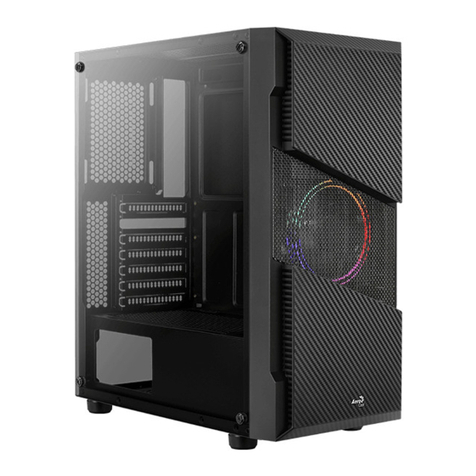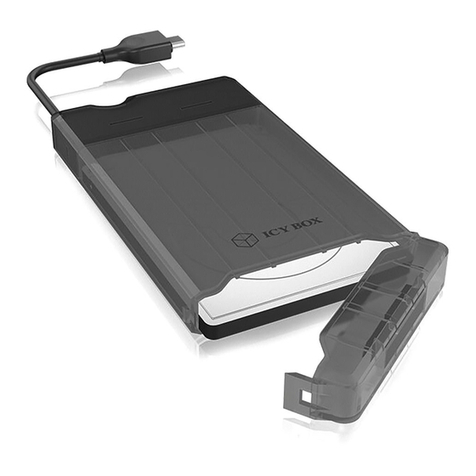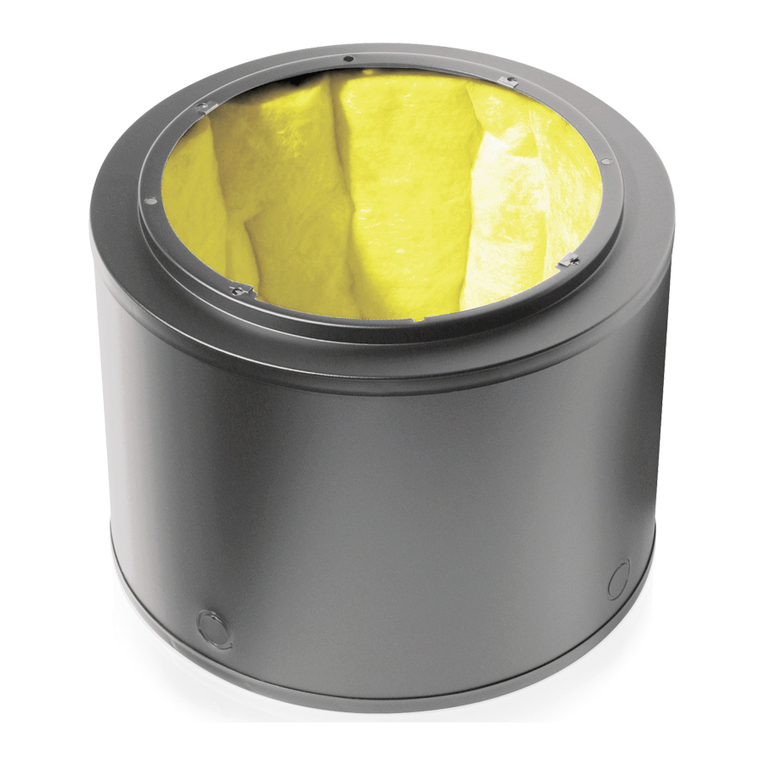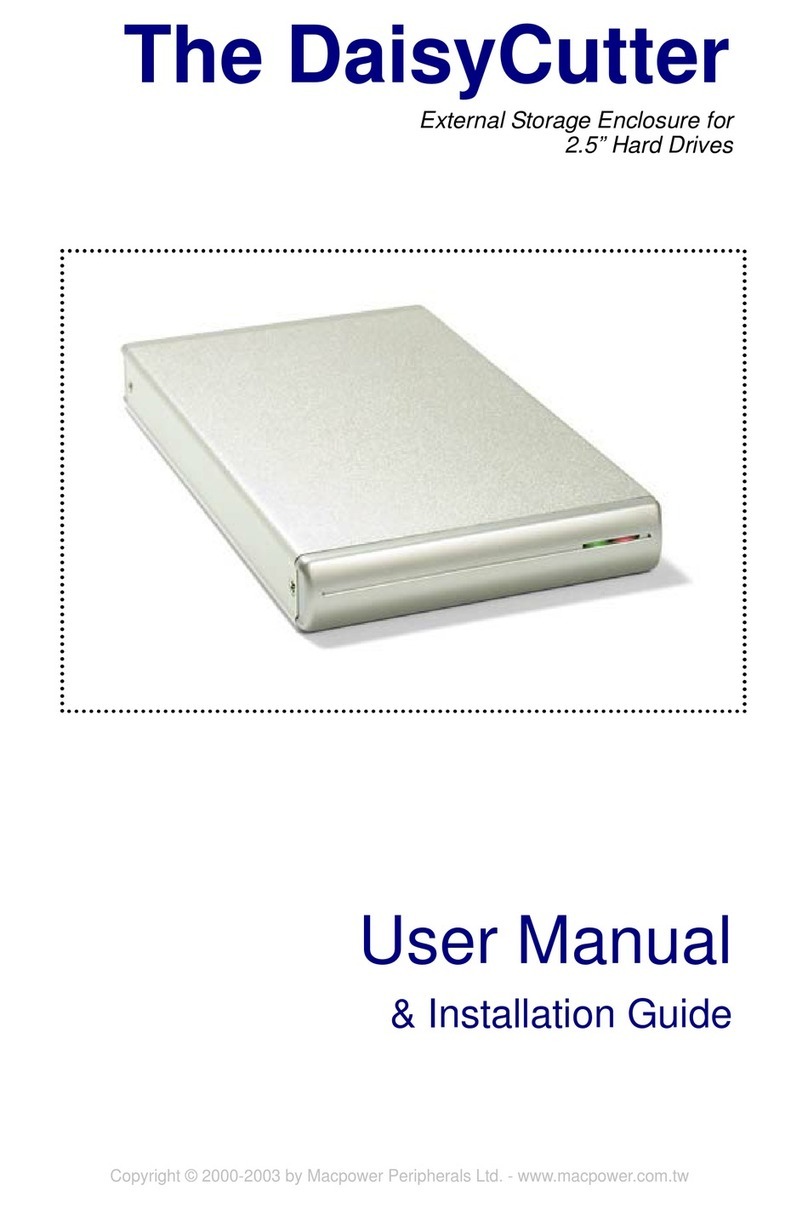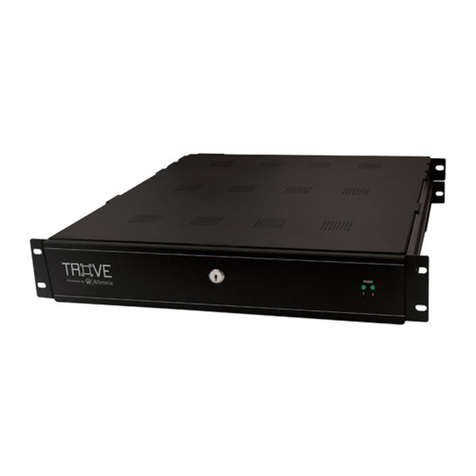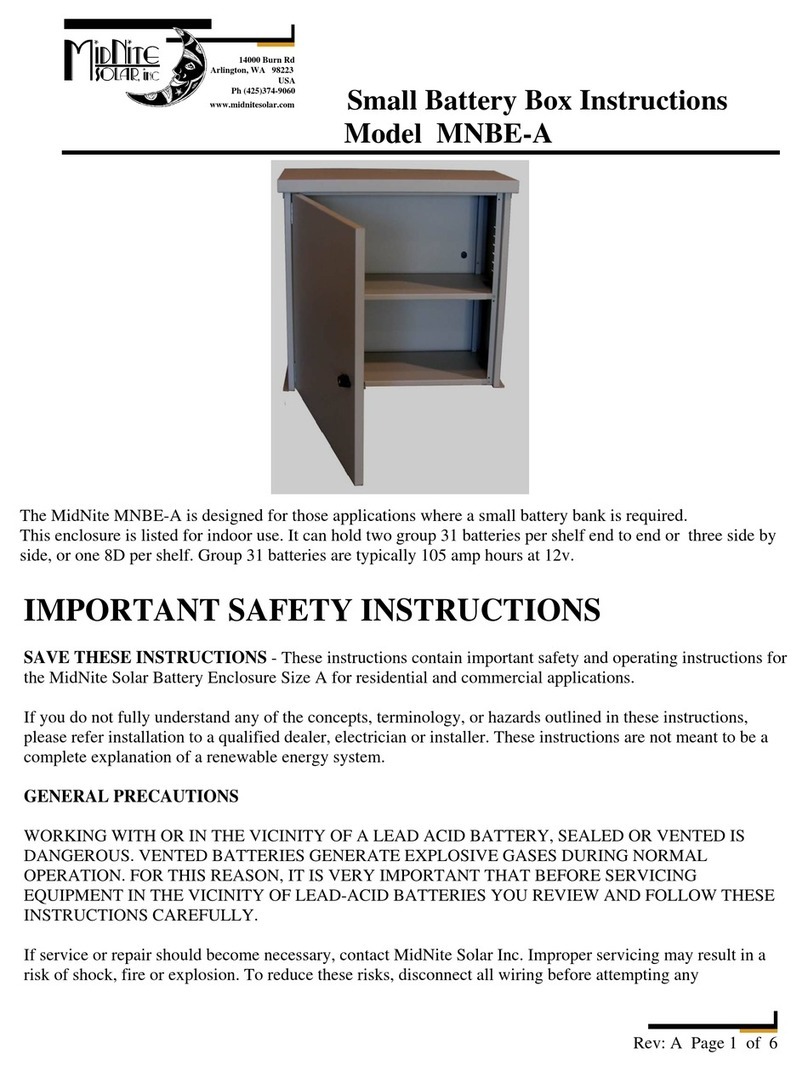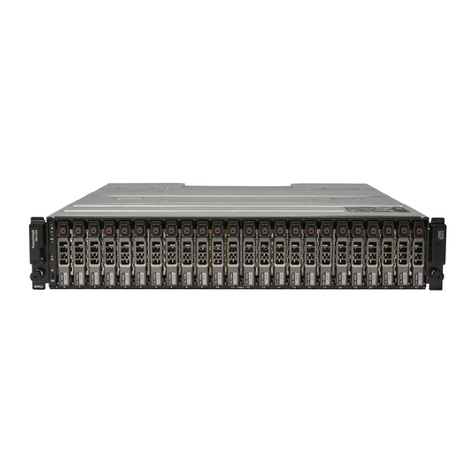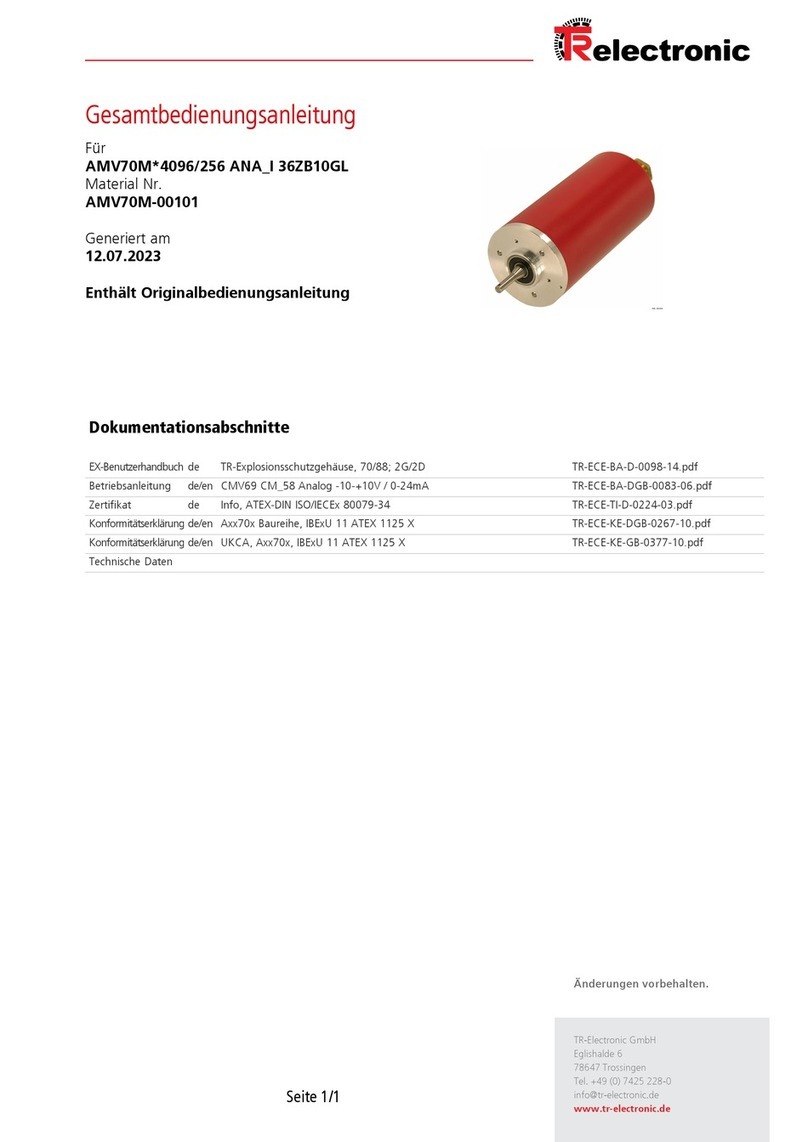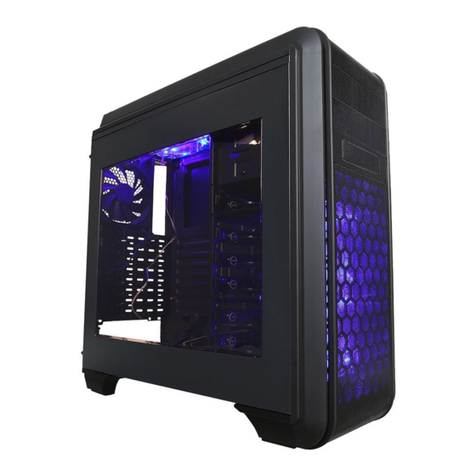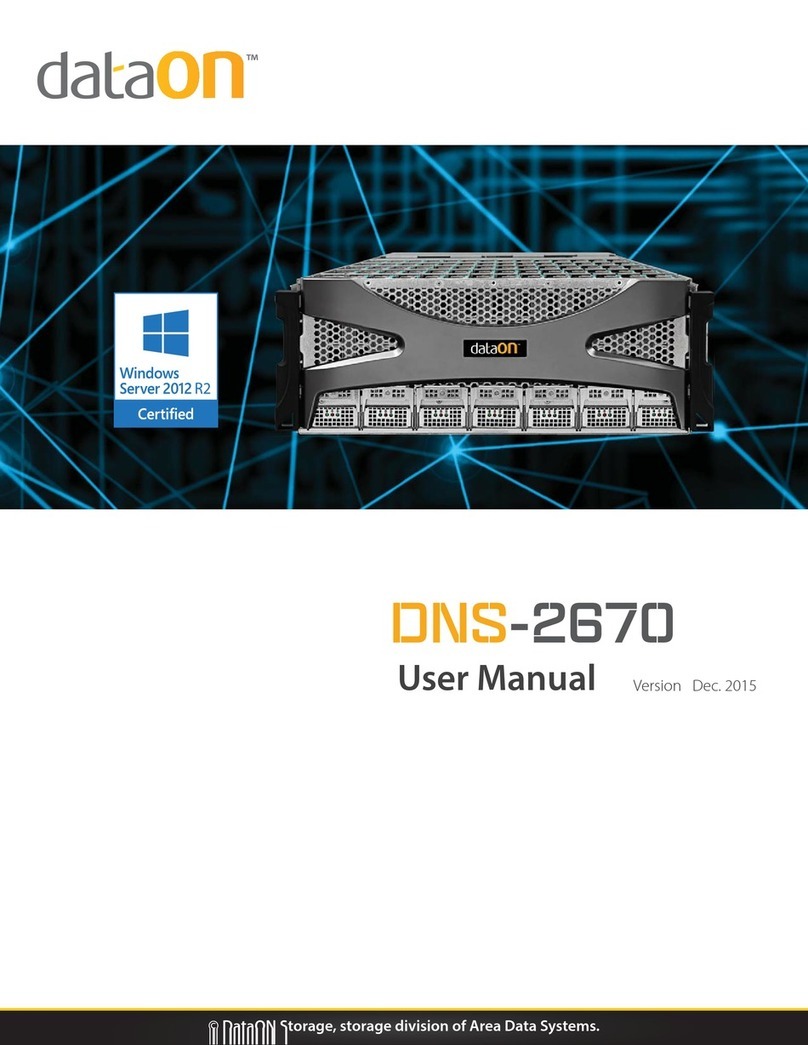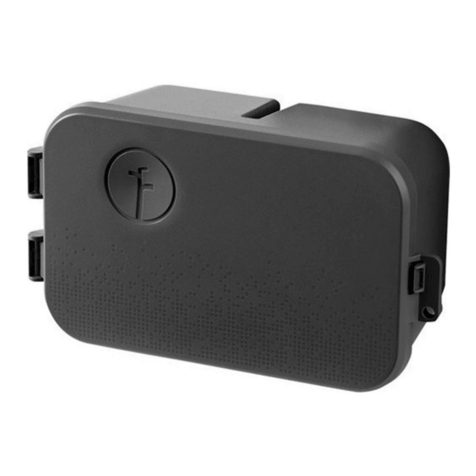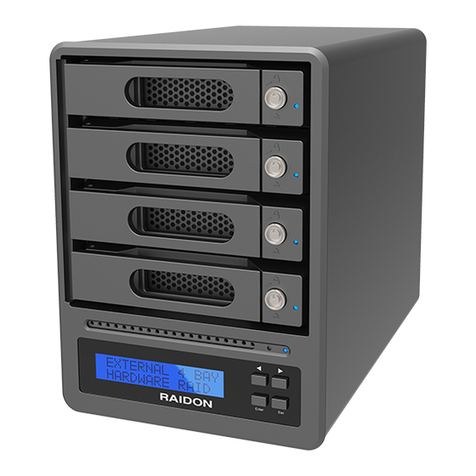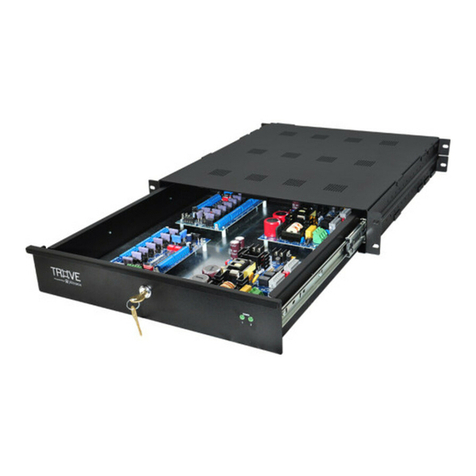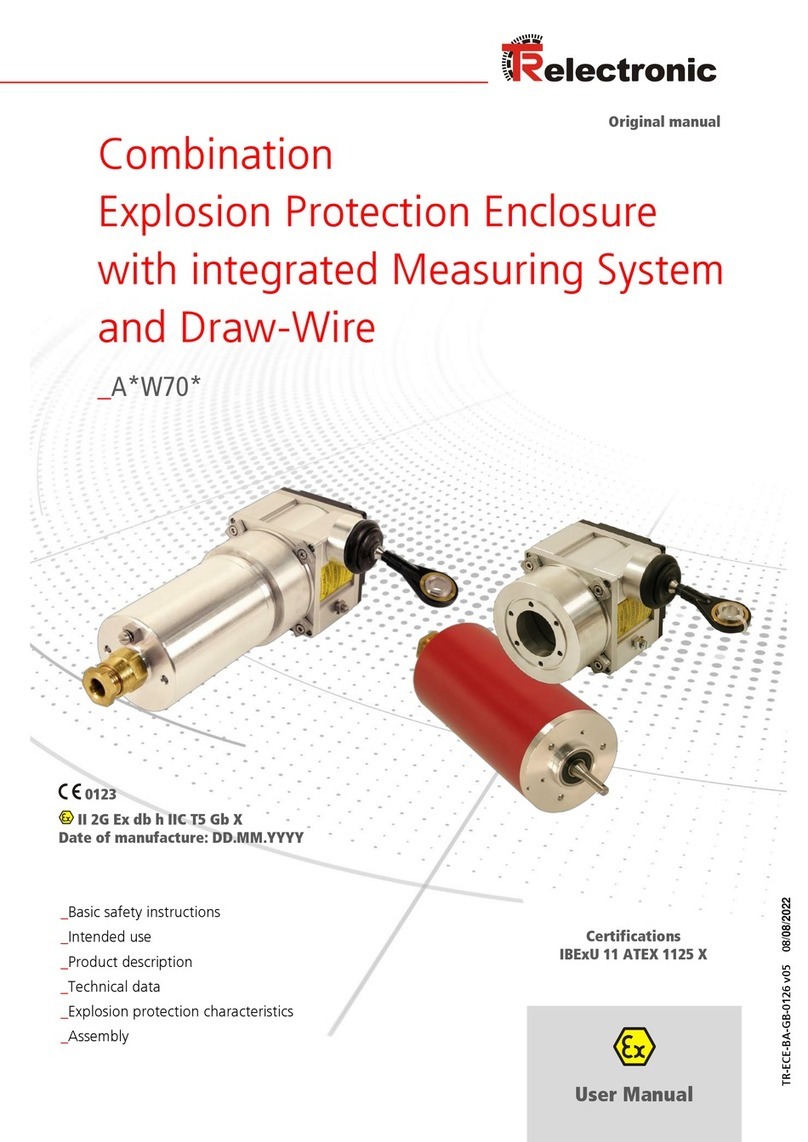aci PM2.5-ROOM Installation instructions

Automation Components, Inc.
2305 Pleasant View Road | Middleton, WI 53562
Phone: 1-888-967-5224 | Website: workaci.com
Page 1
FIGURE 1: ENCLOSURE
DIMENSIONS
PM2.5-ROOM
Installation & Operation Instructions Phone: 1-888-967-5224
Website: workaci.com
GENERAL INFORMATION
“Particulate matter” (PM) is the general term used to
describe solid particles and liquid droplets found in
the air. The PM2.5 series of transmitters are designed
to detect particles less than 2.5 µm in diameter
include smoke, smog, bacteria, ne dust and liquid
droplets, and report the particle concentration of the
monitored environment. The unit utilizes a laser
particulate matter sensor to detect particle sizes
from 0.3 ~ 2.5 µm. The sensor has good long-term
stability with an accuracy 10% reading or 10 µg/m3.
The room unit features eld selectable outputs, 4-20
mA, 0-10 VDC, and Modbus RTU (RS485), relay, and
display.
The sensor has two jumper selectable working
modes for monitoring PM. The Normal Mode
monitors the environment continuously and Auto
Mode reduces the measuring time to extend service
life. The sensor default is set to Auto Mode.
IMPORTANT PRECAUTIONS
• This product uses a laser particulate matter
sensor. It is strictly prohibited to be
disassembled. It is dangerous if the human
body is exposed to the laser directly.
• If the environment exceeds the measurement
range for an extended period, it may lead to a
decrease of the measurement accuracy.
• The performance of the sensor may be
decreased due to excessive dust and oil mist,
etc. in extreme environments. (ie: high
humidity, high temperature)
• Avoid strong light into the housing.
• Avoid vibration.
MOUNTING INSTRUCTIONS
For optimal temperature readings, follow these
tips:
• Avoid air registers, diusers, vents, and
windows
• Avoid conned areas such as shelves, closed
cabinets, closets, and behind curtains.
FIGURE 2: OPENING COVER
Separate the cover from the base by inserting a
at head screwdriver into the top slot marked
“OPEN”. Pry the cover forward.
Attach the base directly to the wall or to a
standard 2”x 4”junction box using (2) #6-32 x 1”
screws.
3.268"
(82.00 mm)
1.205"
(30.60 mm)
4.79"
(121.55 mm)
.984"
(25.00 mm)
• Eliminate and seal all wall and conduit
penetrations. Air migration from wall
cavities may alter readings.
• Do not install near heat sources. eg:
lamps, radiators, direct sunlight,
copiers, chimney walls, walls concealing
hot-water pipes
Version: 1.0
I0000941

Automation Components, Inc.
2305 Pleasant View Road | Middleton, WI 53562
Phone: 1-888-967-5224 | Website: workaci.com
Page 2
FIGURE 3: BACKPLATE
Refer to the wiring instructions to make necessary
connections. After wiring, attach the cover to the
base by snapping the top of the cover on rst and
then the bottom.
Take care when mounting. Check local code for
mounting height requirements. Typical mounting
heights are 48-60”(1.22-1.52m) o the ground and
at least 1.5’(0.5m) from the adjacent wall. The
sensor should be mounted in an area where air
circulation is well mixed, and not blocked by
obstructions.
WIRING INSTRUCTIONS
PRECAUTIONS
• DO NOT RUN THE WIRING IN ANY CONDUIT
WITH LINE VOLTAGE(24/120/230VAC).
• Remove power before wiring. Never
connect or disconnect wiring with power
applied.
• It is recommended that you use an isolated
UL-listed Class 2 transformer when
powering the unit with 24 VAC. Failure to
wire the devices with the correct polarity
when sharing transformers may result in
damage to any device powered by the
shared transformer.
• IF THE 24 VDC OR 24VAC POWER IS SHARED
WITH DEVICES THAT HAVE COILS SUCH AS
RELAYS, SOLENOIDS, OR OTHER
INDUCTORS, EACH COIL MUST HAVE AN
MOV, DC/AC TRANSORB, TRANSIENT
VOLTAGE SUPPRESSOR (ACI PART:
142583), OR DIODE PLACED ACROSS THE
COIL OR INDUCTOR. THE CATHODE, OR
BANDED SIDE OF THE DC TRANSORB OR
DIODE, CONNECTS TO THE POSITIVE SIDE
OF THE POWER SUPPLY. WITHOUT THESE
SNUBBERS, COILS PRODUCE VERY LARGE
VOLTAGE SPIKES WHEN DE-ENERGIZING
THAT CAN CAUSE MALFUNCTION OR
DESTRUCTION OF ELECTRONIC CIRCUITS.
ACI recommends 16 to 26 AWG twisted pair wires
or shielded cable for all transmitters.
ACI recommends using BELDEN 3105 for communi-
cation(Modbus) wiring. This wire has 120 ohm
input impendence.The terminal blocks allow for (1)
or (2) wires to be connected in each position for
daisy chaining. Daisy chain the RS-485 wiring and
do not use “Star” or “T” wiring. Avoid running
communication wires next to AC line voltage wires.
These can be sources of noise that can aect signal
quality.
FIGURE 4: WIRING
Note: Dierent models have
dierent electrical terminals.
Terminal 3 is 0-10VDC output
Terminal 4 is 4-20mA output.
POWER SUPPLY
24VDC
24VAC
RS485
Vout mA
A
B
NO
(Normally Open)
Relay Output
C
(Common)
1 2 3 5 94 6 10
Version: 1.0
I0000941

MENU ADJUSTMENTS
1. Button denition
Set/Save Bit Select/decrease Adjust/increase
Users can adjust the parameters.
The backlight of LCD will be o after 30s without any key’s operation.
Note: the LCD will display "----" when the settings are successful, and display "Err" when failed.
2. Operation instruction
Users can adjust transmitter parameters. Push button to enter programming. "P000" will be displayed. Push
button to select the Column and push button to cycle 0-9 settings. Select dierent Codes to enter
corresponding parameter group settings.
Automation Components, Inc.
2305 Pleasant View Road | Middleton, WI 53562
Phone: 1-888-967-5224 | Website: workaci.com
Page 3
FIGURE 5: MODE SELECTION
MODE SELECTION
There are two working modes, automatic mode (AUTO) and continuous mode (NORMAL). AUTO mode
will automatically reduce the measuring time to extend the service life of the sensor when the dust
concentration changes very slightly. Use MODE jumper to choose the mode. The factory default mode is
AUTO.
Notes:
-P999 Reset: Once entered, rST is displayed. Press button . All factory default settings will be restored.
-P161 1 Point Calibration: The current value is displayed. Press button to increase an oset. Press
button to decrease an oset. The single point oset is shown. After 2 seconds, the new reading(Current
Value + Oset) is shown. Press button to accept changes.
-P401 Relay Settings: Once entered, the current Mode is shown. Followed by Parameter #1, Par. #2, Par.
#3, Par. #4
3. System Error signal
DEVICE CONFIGURATION THROUGH MODBUS RTU
MODBUS RTU INTERFACE
The Modbus Remote Terminal Unit (RTU) data link protocol uses EIA-485 as a two-wire, daisy chain
network. A branch is a discrete chain of devices connected to a controller. The max number of devices per
segment is (32), as per the Modbus specications. 4000 ft (1219.2 m) is the maximum recommended length
for a segment, which includes all devices from the controller to the last device in the daisy chain.
Each branch must have all devices connected with (A) connected to (A) and (B) connected to (B). If a
shielded cable is used, this is not to be connected to the devices. The shield cable should only be
connected on one end to earth ground, usually at the controller.
Each device must be congured for the correct baud rate and have a unique address in each branch. The
baud rate for the branch is set by the controller.
EOL TERMINATION RESISTANCE SELECTION
RS-485 requires that the last device in a chain have a termination resistor. This is controlled using a jumper
in the center and right pins(120 Ω) position marked on FIGURE 7. When the jumper is set to 120 Ω, a 120 Ω
resistance is added in parallel to the data line. When the jumper is set to left and center pins(disabled), the
resistance is not added. By default, the jumper is placed in the disabled position.
A typical Modbus RTU mode message frame is shown below. In the Modbus RTU mode, the messages
between frames are separated by at least 3.5 characters time’s silent interval. If the silent interval between
two characters is more than 3.5 characters time, the former character was transferred successfully, and the
current character’s transmission starts.
ADDRESS SELECTION
Modbus can locate up to 256 dierent addresses, including valid addresses from 1-247. Address 0 is for
broadcast and address 248~255 are reserved for special addresses.
Slave address can be set with compatible Modbus RTU software or via Menu selection(see above for Menu
Adjustments). Default address is 1.
BAUD RATE, DATABITS, PARITY, AND STOPBITS SELECTION
Baud rate is set to 9600, but can also be congured to 4800 via the register or via Menu selection(see above
for Menu Adjustments).
The device that requests information is called the Modbus Master and the devices giving the information
are Modbus Slaves. The Modbus sensors are slave devices and the number of Data Bits needs to be the
same as in the Master device conguration. ACI’s Modbus RTU sensors utilize 8 data bits during
communication exchange.
Parity default setting is NONE. Stopbit default setting is 1. Both settings can adjusted via the register or via
Menu selection(see above for Menu Adjustments).
FUNCTION
The function code is the second data in the frame.Valid function codes are from 0~127 (01H~7FH). See the
relevant Modbus standard. It supports 03H/06H function codes, shown as the following Modbus Poll
software. The detail register addresses are in: 6 General registers table.
BROADCAST MODE TO WRITE DATA TO SLAVE
Using broadcast mode, customer can write data to all slaves connected to the network. Address of
broadcast mode to write data is 0.
For example: change slave address with broadcast mode, customer can set a new slave address. Note: since
this operation will modify all the addresses of the slavers to the same address, it is NOT applicable for
network of more than one slave.
Code
P999
P401
P483
P484
P485
Description
Factory Reset
Relay Settings(see below for sub menu)
RS485 Baud Rate
RS485 Parity
RS485 Address
Default Value
NA
Mode:2
Set Point: 100
Dead Band: 5
On Delay: 3 (S)
O Delay: 1 (S)
9600
0(None)
1
Parameters
(see below for sub menu)
4800, 9600
0(None), 1(Odd), 2(Even)
1-255 (1-32 recommended)
AUTO
MODE
NORMAL AUTO
MODE
NORMAL
SPECIAL MODE TO READ DATA FROM SLAVE
With the special mode, customer can read the register data under the circumstance of NOT knowing the
slave address.
Address of special mode read data: 255(0xFF)
Note: this operation is applicable for ONLY ONE slave in the network.
Version: 1.0
I0000941

MENU ADJUSTMENTS
1. Button denition
Set/Save Bit Select/decrease Adjust/increase
Users can adjust the parameters.
The backlight of LCD will be o after 30s without any key’s operation.
Note: the LCD will display "----" when the settings are successful, and display "Err" when failed.
2. Operation instruction
Users can adjust transmitter parameters. Push button to enter programming. "P000" will be displayed. Push
button to select the Column and push button to cycle 0-9 settings. Select dierent Codes to enter
corresponding parameter group settings.
FIGURE 6: EOL TERMINATION
Relays parameters and descriptions:
Automation Components, Inc.
2305 Pleasant View Road | Middleton, WI 53562
Phone: 1-888-967-5224 | Website: workaci.com
Page 4
3. System Error signal
DEVICE CONFIGURATION THROUGH MODBUS RTU
MODBUS RTU INTERFACE
The Modbus Remote Terminal Unit (RTU) data link protocol uses EIA-485 as a two-wire, daisy chain
network. A branch is a discrete chain of devices connected to a controller. The max number of devices per
segment is (32), as per the Modbus specications. 4000 ft (1219.2 m) is the maximum recommended length
for a segment, which includes all devices from the controller to the last device in the daisy chain.
Each branch must have all devices connected with (A) connected to (A) and (B) connected to (B). If a
shielded cable is used, this is not to be connected to the devices. The shield cable should only be
connected on one end to earth ground, usually at the controller.
Each device must be congured for the correct baud rate and have a unique address in each branch. The
baud rate for the branch is set by the controller.
EOL TERMINATION RESISTANCE SELECTION
RS-485 requires that the last device in a chain have a termination resistor. This is controlled using a jumper
in the center and right pins(120 Ω) position marked on FIGURE 7. When the jumper is set to 120 Ω, a 120 Ω
resistance is added in parallel to the data line. When the jumper is set to left and center pins(disabled), the
resistance is not added. By default, the jumper is placed in the disabled position.
A typical Modbus RTU mode message frame is shown below. In the Modbus RTU mode, the messages
between frames are separated by at least 3.5 characters time’s silent interval. If the silent interval between
two characters is more than 3.5 characters time, the former character was transferred successfully, and the
current character’s transmission starts.
ADDRESS SELECTION
Modbus can locate up to 256 dierent addresses, including valid addresses from 1-247. Address 0 is for
broadcast and address 248~255 are reserved for special addresses.
Slave address can be set with compatible Modbus RTU software or via Menu selection(see above for Menu
Adjustments). Default address is 1.
BAUD RATE, DATABITS, PARITY, AND STOPBITS SELECTION
Baud rate is set to 9600, but can also be congured to 4800 via the register or via Menu selection(see above
for Menu Adjustments).
The device that requests information is called the Modbus Master and the devices giving the information
are Modbus Slaves. The Modbus sensors are slave devices and the number of Data Bits needs to be the
same as in the Master device conguration. ACI’s Modbus RTU sensors utilize 8 data bits during
communication exchange.
Parity default setting is NONE. Stopbit default setting is 1. Both settings can adjusted via the register or via
Menu selection(see above for Menu Adjustments).
FUNCTION
The function code is the second data in the frame.Valid function codes are from 0~127 (01H~7FH). See the
relevant Modbus standard. It supports 03H/06H function codes, shown as the following Modbus Poll
software. The detail register addresses are in: 6 General registers table.
BROADCAST MODE TO WRITE DATA TO SLAVE
Using broadcast mode, customer can write data to all slaves connected to the network. Address of
broadcast mode to write data is 0.
For example: change slave address with broadcast mode, customer can set a new slave address. Note: since
this operation will modify all the addresses of the slavers to the same address, it is NOT applicable for
network of more than one slave.
ERROR CODE
Err
Er4
POSSIBLE PROBLEMS
Key input error
The sensor’s reading is abnormal
SOLUTION
Input correct code
Check if the sensor is in good connection with the PCB
J8
120Ω
END OF LINE
TERMINATION DISABLED
END OF LINE
TERMINATION ENABLED
J8
120Ω
Mode
0
1
2
3
4
Mode Description
Disable Relay
Activate Relay Below
Set Point
Activate Relay Above
Set Point
Activate Relay Between
High and Low Limits
Activate Relay Outside
High and Low Limits
PARA. #1
N/A
Set Point
Set Point
Low Limit
Low Limit
PARA. #2
N/A
Dead
Band
Dead
Band
High Limit
High Limit
PARA. #3
N/A
Actuate
Delay(S)
Actuate
Delay(S)
Actuate
Delay(S)
Actuate
Delay(S)
PARA. #4
N/A
Restore
Delay(S)
Restore
Delay(S)
Restore
Delay(S)
Restore
Relay(S)
Denition
Relay OFF
Relay ON
Relay ON
Relay OFF
Relay OFFRelay OFF
Low limit High limit
Dead band
Set point
Relay OFF Relay ONDead band
Set point
Relay OFF Relay ONRelay ON
Low limit High limit
SPECIAL MODE TO READ DATA FROM SLAVE
With the special mode, customer can read the register data under the circumstance of NOT knowing the
slave address.
Address of special mode read data: 255(0xFF)
Note: this operation is applicable for ONLY ONE slave in the network.
Version: 1.0
I0000941

MENU ADJUSTMENTS
1. Button denition
Set/Save Bit Select/decrease Adjust/increase
Users can adjust the parameters.
The backlight of LCD will be o after 30s without any key’s operation.
Note: the LCD will display "----" when the settings are successful, and display "Err" when failed.
2. Operation instruction
Users can adjust transmitter parameters. Push button to enter programming. "P000" will be displayed. Push
button to select the Column and push button to cycle 0-9 settings. Select dierent Codes to enter
corresponding parameter group settings.
MODBUS MESSAGE
Automation Components, Inc.
2305 Pleasant View Road | Middleton, WI 53562
Phone: 1-888-967-5224 | Website: workaci.com
Page 5
CRC Check
16 bits
Data
N x 8 bits
Address
8 bits
Function
8 bits
Start
≥3.5 char
End
≥3.5 char
3. System Error signal
DEVICE CONFIGURATION THROUGH MODBUS RTU
MODBUS RTU INTERFACE
The Modbus Remote Terminal Unit (RTU) data link protocol uses EIA-485 as a two-wire, daisy chain
network. A branch is a discrete chain of devices connected to a controller. The max number of devices per
segment is (32), as per the Modbus specications. 4000 ft (1219.2 m) is the maximum recommended length
for a segment, which includes all devices from the controller to the last device in the daisy chain.
Each branch must have all devices connected with (A) connected to (A) and (B) connected to (B). If a
shielded cable is used, this is not to be connected to the devices. The shield cable should only be
connected on one end to earth ground, usually at the controller.
Each device must be congured for the correct baud rate and have a unique address in each branch. The
baud rate for the branch is set by the controller.
EOL TERMINATION RESISTANCE SELECTION
RS-485 requires that the last device in a chain have a termination resistor. This is controlled using a jumper
in the center and right pins(120 Ω) position marked on FIGURE 7. When the jumper is set to 120 Ω, a 120 Ω
resistance is added in parallel to the data line. When the jumper is set to left and center pins(disabled), the
resistance is not added. By default, the jumper is placed in the disabled position.
A typical Modbus RTU mode message frame is shown below. In the Modbus RTU mode, the messages
between frames are separated by at least 3.5 characters time’s silent interval. If the silent interval between
two characters is more than 3.5 characters time, the former character was transferred successfully, and the
current character’s transmission starts.
ADDRESS SELECTION
Modbus can locate up to 256 dierent addresses, including valid addresses from 1-247. Address 0 is for
broadcast and address 248~255 are reserved for special addresses.
Slave address can be set with compatible Modbus RTU software or via Menu selection(see above for Menu
Adjustments). Default address is 1.
BAUD RATE, DATABITS, PARITY, AND STOPBITS SELECTION
Baud rate is set to 9600, but can also be congured to 4800 via the register or via Menu selection(see above
for Menu Adjustments).
The device that requests information is called the Modbus Master and the devices giving the information
are Modbus Slaves. The Modbus sensors are slave devices and the number of Data Bits needs to be the
same as in the Master device conguration. ACI’s Modbus RTU sensors utilize 8 data bits during
communication exchange.
Parity default setting is NONE. Stopbit default setting is 1. Both settings can adjusted via the register or via
Menu selection(see above for Menu Adjustments).
FUNCTION
The function code is the second data in the frame.Valid function codes are from 0~127 (01H~7FH). See the
relevant Modbus standard. It supports 03H/06H function codes, shown as the following Modbus Poll
software. The detail register addresses are in: 6 General registers table.
BROADCAST MODE TO WRITE DATA TO SLAVE
Using broadcast mode, customer can write data to all slaves connected to the network. Address of
broadcast mode to write data is 0.
For example: change slave address with broadcast mode, customer can set a new slave address. Note: since
this operation will modify all the addresses of the slavers to the same address, it is NOT applicable for
network of more than one slave.
SPECIAL MODE TO READ DATA FROM SLAVE
With the special mode, customer can read the register data under the circumstance of NOT knowing the
slave address.
Address of special mode read data: 255(0xFF)
Note: this operation is applicable for ONLY ONE slave in the network.
Version: 1.0
I0000941

MENU ADJUSTMENTS
1. Button denition
Set/Save Bit Select/decrease Adjust/increase
Users can adjust the parameters.
The backlight of LCD will be o after 30s without any key’s operation.
Note: the LCD will display "----" when the settings are successful, and display "Err" when failed.
2. Operation instruction
Users can adjust transmitter parameters. Push button to enter programming. "P000" will be displayed. Push
button to select the Column and push button to cycle 0-9 settings. Select dierent Codes to enter
corresponding parameter group settings.
Page 5
Automation Components, Inc.
2305 Pleasant View Road | Middleton, WI 53562
Phone: 1-888-967-5224 | Website: workaci.com
Page 6
3. System Error signal
DEVICE CONFIGURATION THROUGH MODBUS RTU
MODBUS RTU INTERFACE
The Modbus Remote Terminal Unit (RTU) data link protocol uses EIA-485 as a two-wire, daisy chain
network. A branch is a discrete chain of devices connected to a controller. The max number of devices per
segment is (32), as per the Modbus specications. 4000 ft (1219.2 m) is the maximum recommended length
for a segment, which includes all devices from the controller to the last device in the daisy chain.
Each branch must have all devices connected with (A) connected to (A) and (B) connected to (B). If a
shielded cable is used, this is not to be connected to the devices. The shield cable should only be
connected on one end to earth ground, usually at the controller.
Each device must be congured for the correct baud rate and have a unique address in each branch. The
baud rate for the branch is set by the controller.
EOL TERMINATION RESISTANCE SELECTION
RS-485 requires that the last device in a chain have a termination resistor. This is controlled using a jumper
in the center and right pins(120 Ω) position marked on FIGURE 7. When the jumper is set to 120 Ω, a 120 Ω
resistance is added in parallel to the data line. When the jumper is set to left and center pins(disabled), the
resistance is not added. By default, the jumper is placed in the disabled position.
A typical Modbus RTU mode message frame is shown below. In the Modbus RTU mode, the messages
between frames are separated by at least 3.5 characters time’s silent interval. If the silent interval between
two characters is more than 3.5 characters time, the former character was transferred successfully, and the
current character’s transmission starts.
ADDRESS SELECTION
Modbus can locate up to 256 dierent addresses, including valid addresses from 1-247. Address 0 is for
broadcast and address 248~255 are reserved for special addresses.
Slave address can be set with compatible Modbus RTU software or via Menu selection(see above for Menu
Adjustments). Default address is 1.
BAUD RATE, DATABITS, PARITY, AND STOPBITS SELECTION
Baud rate is set to 9600, but can also be congured to 4800 via the register or via Menu selection(see above
for Menu Adjustments).
The device that requests information is called the Modbus Master and the devices giving the information
are Modbus Slaves. The Modbus sensors are slave devices and the number of Data Bits needs to be the
same as in the Master device conguration. ACI’s Modbus RTU sensors utilize 8 data bits during
communication exchange.
Parity default setting is NONE. Stopbit default setting is 1. Both settings can adjusted via the register or via
Menu selection(see above for Menu Adjustments).
FUNCTION
The function code is the second data in the frame.Valid function codes are from 0~127 (01H~7FH). See the
relevant Modbus standard. It supports 03H/06H function codes, shown as the following Modbus Poll
software. The detail register addresses are in: 6 General registers table.
BROADCAST MODE TO WRITE DATA TO SLAVE
Using broadcast mode, customer can write data to all slaves connected to the network. Address of
broadcast mode to write data is 0.
For example: change slave address with broadcast mode, customer can set a new slave address. Note: since
this operation will modify all the addresses of the slavers to the same address, it is NOT applicable for
network of more than one slave.
Register Address
40001, 00000
40002, 00001
40003, 00002
……
40014, 00013
……
40016, 00015
40017, 00016
40018, 00017
40019, 00018
40020, 00019
40021, 00020
40022, 00021
……
40029, 00028
40030, 00029
R/W
R
R
R
R/W
R/W
R/W
R/W
R/W
R/W
R/W
R/W
R/W
R/W
Type
Signed
Signed
Signed
Signed
Signed
Signed
Signed
Signed
Signed
Signed
Signed
Signed
Signed
Denition
Product code
PM2.5 Value
PM10 Value
RS485-Modbus RTU slave address
Function register
Relay Control Mode
Back up
Set point (mode 1 or 2) low limit
(mode 3 or 4) regional
Dead band (mode 1 or 2) high
limit(mode 3 or 4)
Start delay
Stop delay
Baud rate
Parity
Remarks
PM series Product code: 9070
PM2.5 = Value , ug/m³
PM10 = Value , ug/m³
Default slave address =1, (RTU,9600,n,8,1)
Write 40016=21845 to reset to factory
default setting
0: O
1: Relay activated Below the set point.
2: Relay activated Higher than set point.
3: Relay activated in the set range
4: Relay activated outside the set range
Relay control parameters set
Baud rate: 9600(default) or 4800
Parity : 0: NONE, 1: ODD, 2: EVEN
Note: 1. 40001 is PLC mode ADDRESS (BASE 1); 00000 is PROTOCOL ADDRESS (BASE 0).
2. Function register 40016: Use the 06 function code to write password (21845) to the register 40016 to
return to the factory set.
MODBUS RTU
SPECIAL MODE TO READ DATA FROM SLAVE
With the special mode, customer can read the register data under the circumstance of NOT knowing the
slave address.
Address of special mode read data: 255(0xFF)
Note: this operation is applicable for ONLY ONE slave in the network.
Version: 1.0
I0000941

Page 6
Automation Components, Inc.
2305 Pleasant View Road | Middleton, WI 53562
Phone: 1-888-967-5224 | Website: workaci.com
Page 7
WARRANTY
The ACI PM Room Series are covered by ACI’sTwo (2)Year Limited Warranty, which is located in the front of ACI’S
SENSORS & TRANSMITTERS CATALOG or can be found on ACI’s web site: www.workaci.com.
W.E.E.E. DIRECTIVE
At the end of their useful life the packaging and product should be disposed of via a suitable recycling
centre. Do not dispose of with household waste. Do not burn.
PRODUCT SPECIFICATIONS
16-28VAC/16-35VDC (Reverse Polarity Protection)
4-20 mA: 500 Ohms maximum | 0-10 VDC: 2K Ohms Minimum
0~500μ g/m3
4-20mA(Default), 0-10VDC
N.O. rated 3A @ 30VDC, 3A @250VAC
100μ g/m3
+/-10μg/m3 @ 0~100μg/m3, +/-10% reading @
100~500/600µg/m3@25°C/50%RH
1 μg/m3
In continuous service mode, sample time <1s, response time <10s
15 minutes
MTBF more than 3 years in continuous service mode, service life up to 8-10
years in auto (intermittent)
service mode
Modbus RTU; EIA RS-485
1-247
4800 or 9600
None/Even/Odd
1
8
Screw Terminal Blocks / 16 AWG (1.31 mm2) to 22 AWG (0.33 mm2)
0.45 lbf-in (0.5 Nm) nominal
32 to 122°F (0 to 50°C)
-30 to 70°F (-34 to 21°C)
10 to 95% RH, non-condensing
IP30
ABS Plastic / UL94V-0
Supply Voltage:
Output Load Resistance:
Measurement Range:
Output:
Relay:
Relay Trip Point:
Accuracy:
Resolution:
Response Time:
Warm Up Time:
Service Life:
Communication Protocol:
Sensor Addresses:
Supported Baud Rates:
Parity:
Stop Bits:
Databits:
Connections / Wire Size:
Terminal Block Torque Rating:
Operating Temperature Range:
Storage Temperature Range:
Operating Humidity Range:
Enclosure Protection:
Enclosure Material / UL Flammability:
Version: 1.0
I0000941

Automation Components, Inc.
2305 Pleasant View Road | Middleton, WI 53562
Phone: 1-888-967-5224 | Website: workaci.com
Page 8
Automation Components, Inc.
2305 Pleasant View Road
Middleton, WI 53562
Phone: 1-888-967-5224
Website: workaci.com
Page 7
Version: 1.0
I0000941
Table of contents
